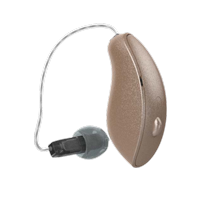The American Speech-Language and Hearing Association (ASHA) is a community of audiologists, speech-language pathologists, students, and faculty members aimed at improving awareness of speech and hearing issues by removing common barriers to excellent communication.
Each May, ASHA hosts “Better Hearing and Speech Month” (BHSM) to jump-start their efforts. This year’s theme is “Communication at Work.”
How to improve communication during video conference meetings
It might seem strange to talk about hearing loss in the context of the recent stay-at-home orders and the coming economic recession. However, it is still pertinent, especially if you happen to be working at home using communication tools such as Zoom.
The right meeting environment can improve communication for all and ensure the person with hearing loss has access to all the information they need to do the best job.
Here are some tips for smoother video conference meetings.
What the meeting organizer can do
Make time for an icebreaker. Just like a regular meeting, make time for a preamble. This will help build a welcoming environment and promote interaction.
Insist on video for all participants. Whenever possible, use a virtual meeting platform to use webcams and insist that all participants use them. Visuals help people with and without hearing loss understand conversations much better.
Share your screen if necessary. If the meeting focuses on a specific document or resource that you are showing others, consider sharing your screen so that all participants can access the document or resource in real-time. Use your computer mouse to help highlight key areas or details you are discussing, or as a digital pointer to highlight the section you are talking about.
Record the meeting. Consider recording the session (after getting the consent of all participants). Let attendees know the meeting is being documented and where they can go to view it after the meeting. Because some attendees can encounter network connection problems or have their calls dropped, it is helpful for those who missed a section of the discussion or presentation.
What coworkers can do
Use good lighting. Participate in video calls in a well-lit space. When using a webcam, it’s better to have lighting in front of you rather than behind you. If all the light (electronic or natural) of a room is projected from behind a person and onto a camera, the facial features are difficult to see, restricting the facial expressions and lip-reading, which communicate vital clues to the sentiment of what the person is saying.
Don’t cover your mouth. Try to keep your hands, hair, and clothes away from your mouth when talking. This also helps you speak more clearly, which gives listeners the best opportunity to hear and understand you.
Use the mute button. If you’re not speaking, keep your microphone silenced. As multiple people attend an online meeting, background noise from each participant’s home as well as texting, eating, and so on can be highly disruptive.
Take turns speaking. Don’t interrupt others. It is harder to transfer from listening to one person to another in a virtual meeting. When it’s your turn, be as concise as possible, then let the conversation pass to the next person. Waiting your turn ensures everyone has an equal opportunity to share their thoughts.
What those with hearing loss can do
Use noise-canceling Headphones. Many headphones are now noise-canceling devices, which can make it easier to hear during the meeting without increasing the volume and raising the background noise. You may want to play with various headphone types to determine which style offers the best listening experience.
Use Bluetooth Hearing Aids. If you’re wearing hearing aids, ask your audiologist if there’s an alternative that enables your hearing aids to connect directly to the device you’re using for virtual meetings. Most hearing aids are now ‘made for iPhone’ or ‘made for any phone,’ which helps them to synchronize to your favorite device.
Let others know if you can’t hear them. Speak to your boss and advocate for yourself if you can’t hear or understand others. If you’re struggling to understand, others might be struggling too. Although this might sometimes slow the meeting down, it would be worse to miss essential tasks, facts, or notifications during and after the meeting.
Whether you’re meeting your team remotely or plan to attend them when things reopen again, professionally-fitted hearing aids can help you perform your best at work. The first step towards the right hearing aid is a comprehensive hearing test. Contact us today to set up an appointment.










